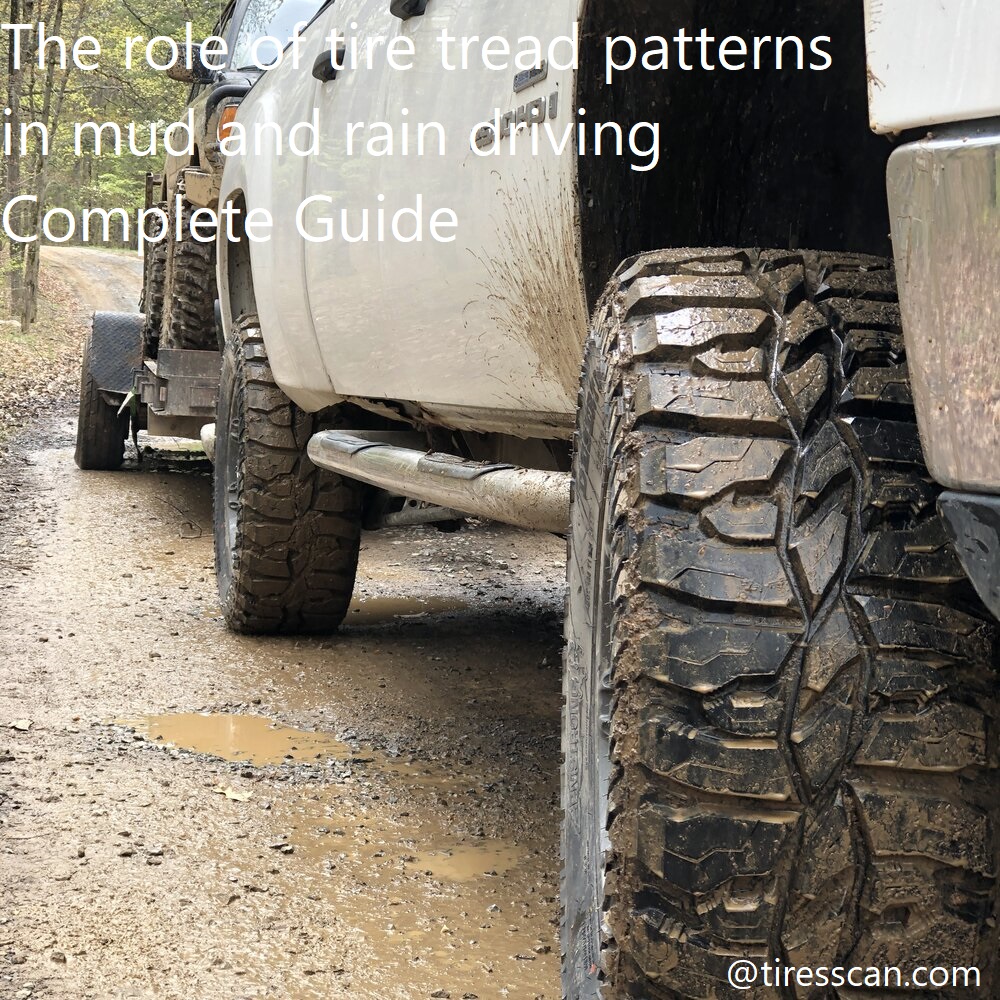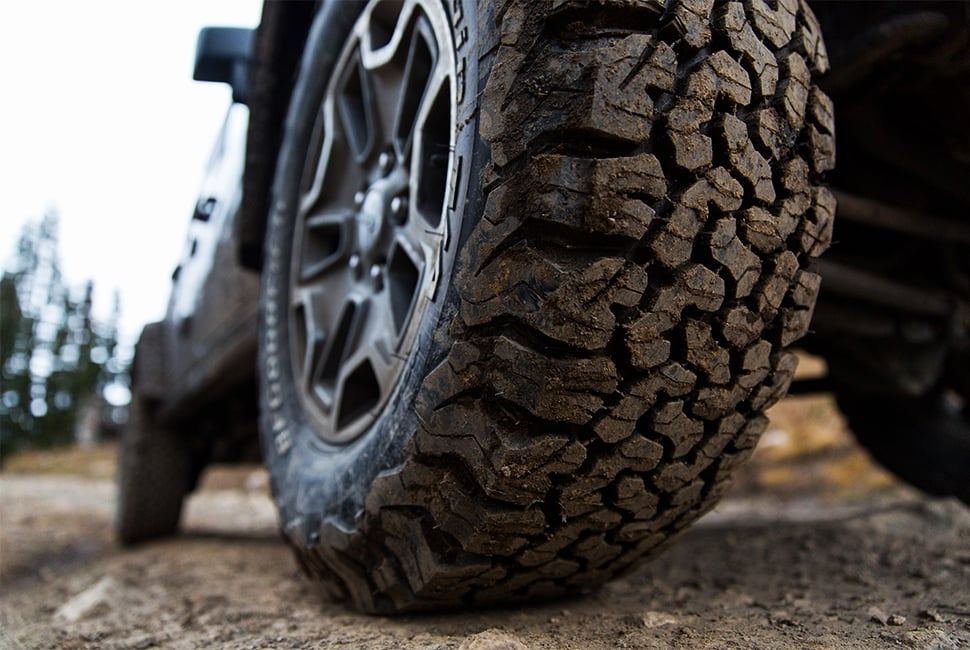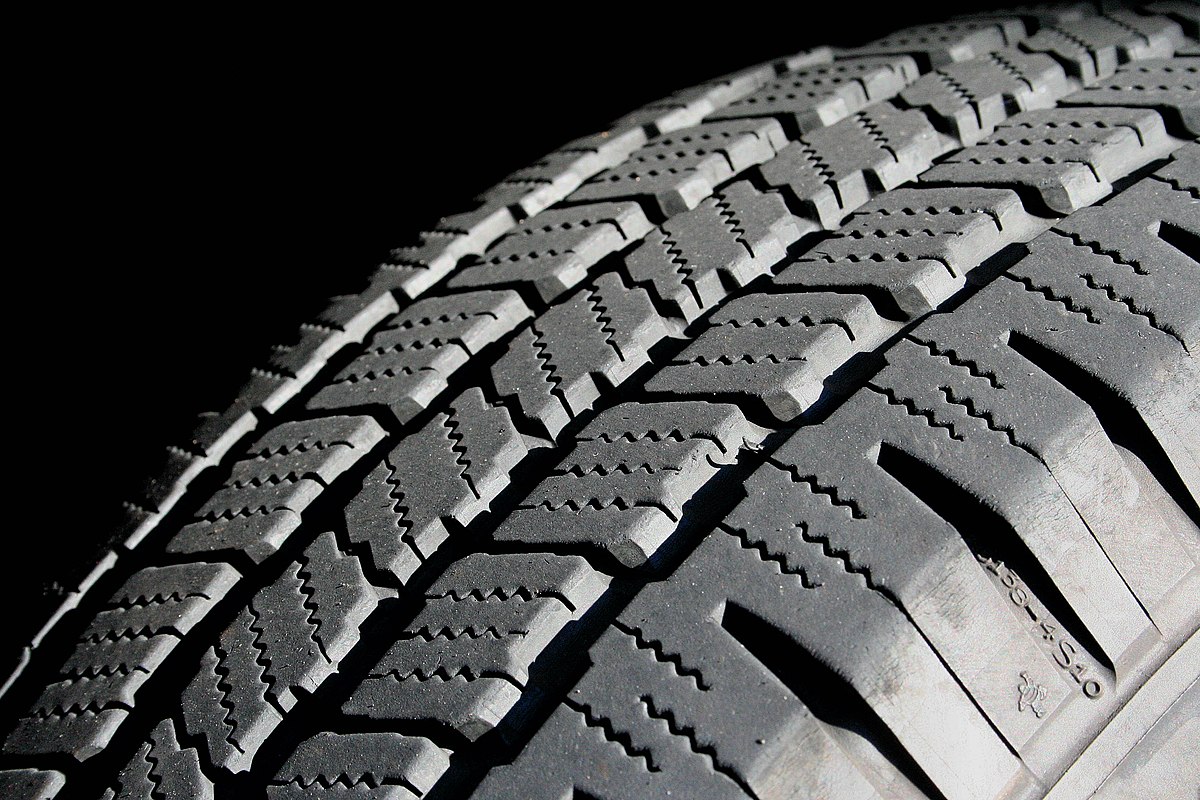Have you ever wondered how tire tread patterns affect your driving in muddy and rainy conditions? You’re not alone.
This complete guide will cover the role of tire tread patterns in mud and rain driving and help you choose the right tires for your car. With this knowledge, you can stay safe while navigating through slippery terrain.
The main purpose of a tire’s tread pattern is to channel away water from the contact patch with the road, which in turn helps to reduce hydroplaning and improve traction. This also plays an important role in driving in inclement weather, like rain and snow. In muddy conditions, a tire’s tread pattern can also help to create additional grip by dispersing mud and debris. By understanding how to best perform in bad weather conditions, drivers can prepare themselves for any situation and drive safely with the right set of tires.
This guide is intended to help drivers understand all of the factors that are involved in choosing an appropriate tire tread pattern for their vehicle type, as well as what they should be looking for when driving on wet or muddy surfaces. From why certain tread patterns are designed with specific attributes to how different rubber compounds can impact grip levels on wet roads, this guide seeks to provide more detailed information about all things related to rain and mud driving.
Explanation of the importance of tire tread patterns in mud and rain driving
Tire tread patterns play a large role in our ability to safely drive on wet and muddy roads. Tire treads are designed to produce channels which allow water and mud to be displaced to up the contact patch of the tire with the road, resulting in increased traction.
This design works by squeezing smaller amounts of water between the ground and tire contact surface, as opposed to allowing a larger amount of water to come between them. The presence of channels allows for far more effective drainage away from the tire’s contact patch, reducing hydroplaning risk tremendously.
Tread patterns also help prevent soil compaction under the tread itself. Use of smaller volume tires, such as those found on mountain bikes or ATVs, is generally advised when navigating muddy/slippery terrain since it enables thread-to-ground engagement with far less effort from the rider/driver due to their low weight. Tread patterns significantly aid wheel-spin control; its pattern helps evacuate mud and debris from the wheel area quickly and efficiently so that it does not have time build up enough pressure against the wheel for it become stuck or immobile in such cases.
In order for tires to perform optimally in mud and rain driving conditions, it is important that you maintain recommended tire pressures specified by your vehicle manufacturer or tire manufacturer as well as ensure that tread depths meet safety standards outlined by government regulations (2/32 inch minimum). In addition, selecting an appropriate type of rubber compound should be taken into consideration when purchasing new waterproof tires; while a softer rubber may provide superior traction under wet conditions, they may also wear out more quickly than harder rubber compounds due to increased heat caused by friction during cornering maneuvers on paved surfaces.

Tire Tread Patterns
The shape and design of tire treads play an important role when it comes to driving in wet and muddy conditions. Knowing how to select a tire tread pattern based on the terrain can help you remain in control of your vehicle, even in difficult driving conditions.
Tire tread patterns come in two distinct types: symmetrical and asymmetrical, each with its own specific design patterns.
Symmetrical tire tread patterns: These are designed with identical designs across the entire face of the tire. They feature central ribs which help to provide highway stability, while small sipes promote wet-weather traction. Many also include lateral grooves which increase cornering and braking capabilities as well as helping prevent hydroplaning. Symmetrically designed tires are ideal for all-season use, providing a balanced performance level on both dry and wet surfaces.
Asymmetrical tire tread patterns: Developed more recently, asymmetric tires feature differently shaped designs across their faces to optimize their performance under varying conditions. An offset center rib helps provide stiffness which increases steering responsiveness and promotes stability when driving at higher speeds on dry roads; inner shoulder blocks enhance traction during cornering; and wider grooves allow for increased water evacuation from beneath the tire when traveling through wet surfaces such as mud or snow. Asymmetric tires are most suitable for sporty vehicles or those driven primarily off-road in challenging environments such as mud or rain forests.
Definition of tire tread patterns
When the tread of a tire comes in contact with the ground, it performs two functions. First, it helps the vehicle grip and maneuver on different types of surfaces. Secondly, it disperses water and dirt away from the tire’s contact patch. This enables the vehicle to maintain traction on wet and muddy surfaces, even if there is a large amount of debris or water present.
The tread pattern itself can be generally divided into three categories: Symmetric, Asymmetric, and Cross-directional patterns. Each provides its own unique benefits that are tailored to fit your specific driving needs.
Symmetric tires have tread patterns that consist of repeating blocks or ribs across the width of the tire. They provide greater stability and control when cornering at high speeds due to their uniform contact patch with the road surface. However, they offer limited traction in muddy or wet conditions as their evenly spaced tread blocks tend to push any loose material away from their grip area, rather than channeling it away like asymmetrical tires do.
Asymmetrical tires have an offset pattern between their inside and outside edges, allowing dirt to be channeled away more effectively in off-road conditions while maintaining an even level of cornering grip during high speed driving situations. Asymmetry allows for slight variation in individual tire blocks along with multiple sipes meaning increased levels of performance on wet surfaces when compared to symmetrical designs.
Cross-directional tires feature alternating grooves that run across each other in both directions when viewed from above them; this type of pattern creates several biting edges which give improved responsiveness during braking maneuvers as well as enhanced cornering performance over wet roads thanks to superior stability at varying angles; this is thanks largely to how quickly water can be siphoned away through these channels despite aggressive acceleration movements often associated with racing scenarios which would lead more conventional designs skidding across slippery surfaces instead of accelerating forwards safely.
Factors to consider for mud and rain driving
When encountering mud and rain on the roadway, drivers need to pay attention to some factors that will impact their driving experience. The following are some of the most important factors to consider:
Tire Tread Patterns – Mud and rain driving require tires with aggressive tread patterns. The tread pattern needs to be deep enough to provide traction in muddy conditions, allowing tires to grip the road and navigate slick surfaces without slipping. Soft rubber compounds can help further enhance grip in wet conditions. Wide tire contact patches also help increase levels of traction during mud and rain driving.
Vehicle Setup – Vehicle setup is essential when it comes to successfully navigating areas with mud or heavy rainfall. Drivers should raise the suspension height of their vehicle, increasing ground clearance and prevent stalling out during mud or water crossings. Drivers should also pay attention to air pressure so that enough air is in the tires for optimal performance under difficult weather conditions. It is also important that vehicles have a functional four-wheel-drive system for ultimate control as well as high performance shocks for dynamic ride adjustments.
Road surface conditions
Various elements of the environment, such as weather and road surface conditions, can impact how a vehicle functions and operates. These conditions can often be difficult to predict, which makes selecting the right tire tread pattern critical for vehicle safety. In particular, driving in mud or rain has become increasingly hazardous for motorists in recent years, leading to a need for tires with optimal performance capabilities. Tire tread patterns are designed with certain types of terrain or weather in mind and have some of their properties influenced by the type of surface they will be encountering on the road.
There are several different types of tire tread patterns that are recommended for use when driving in mud or rain, making it important to understand these characteristics before making a purchase. The most important factor when selecting a tire tread pattern is its ability to provide traction on wet surfaces while also providing adequate drainage. In this regard, there are two common chemistries used: open-void designs and closed-void designs. Open-void designs are designed to displace water quickly but cannot provide adequate traction when negotiating turns or braking; closed-void design tires work by creating eddies that help increase grip on wet surfaces while also providing proper drainage. Furthermore, there are also three different types of tread patterns (symmetric, asymmetric, and directional) that may be suitable depending on the type of terrain encountered while driving (e.g., snow vs ice).
In addition to these various aspects pertaining to tread pattern chemistry and design type, it is also important to consider other factors such as tire wear resistance and overall water dispersal capabilities when selecting tires for an automobile ahead of time—as each individual tire must possess sufficient amount performance protocols set forth by modern safety standards mandated by the industry today before being considered suitable for its intended use over long periods of time routinely exposed to varying terrain conditions potentially impacted by weather frequently found on roads regularly traversed daily now more than ever before due to evolving traffic congestion levels commonly witnessed throughout major metropolitan areas worldwide.
Weather conditions
Weather conditions, in particular rain and mud, have major implications for vehicle safety. As such, drivers must be aware of essential components of their vehicle which can help them maintain sufficient traction on the roads. One such critical part is a vehicle’s tires with their specific tread patterns that are designed to help the driver stay firmly grounded on the roadway surface.
Tire tread patterns can provide better grip when navigating mud and rain-soaked roads, allowing vehicles to remain in control no matter what weather situation they may face. Here we will explain how tire tread patterns play into mud and rain driving performance and provide a comprehensive guide on selecting the right tire tread pattern for wet conditions.

Vehicle type
The type of vehicle matters when it comes to selecting the proper tire tread pattern for mud and rain driving.
Light-duty vehicles, such as cars, are more apt to use street-oriented UHP (Ultra High Performance) tires and passenger car tires that feature an aggressive tread pattern. These vehicles tend to benefit most from summer tires since the tire compound is designed to hold onto the road surface better in warm temperatures.
Heavy-duty pickups and SUVs require all-season tires because they are designed with 4WD technology, so they will need an aggressive all-season tire that performs well both on and off road. All terrain and off road tires are best suited for these types of vehicles since they can handle most terrain conditions including heavy snow, mud, sand, rocks, and even wet streets.
Depending on the application there may also be an advantage to running studded winter tires for extra traction in icy or snowy conditions.
Benefits of using tires with appropriate tread patterns
Tires with appropriate tread patterns not only enhance overall car performance but also provide great advantages in mud and rain driving. They increase traction, improve the car’s cornering ability, increase brake performance and reduce the risk of hydroplaning.
In muddy conditions, the tread blocks on a tire provide numerous gripping edges that bite into the terrain and keep it from sliding out of control.
When driving in rain, tires with proper grooves or channels facilitate water dispersion meaning less water is retained between the surface and tire. This results in maintaining good contact with the road surface thus enhancing traction performance. Tread patterns also create vertical edges which disperse water more easily and this helps to minimize aquaplaning risk – a dangerous situation where vehicle tires lose all contact with wet roads because of excess standing water on its surface.
Furthermore, having tire treads with appropriate pattern design increases an overall car’s capability to handle cornering forces better by increasing the area of contact between the tire and ground surface. The greater area allows for increased braking power which is essential for safety purposes especially when encountered with slippery conditions due to rain or mud. By using such tires you can stay in complete control even during critical situations where wet roads could cause spinning out of control or skidding etc.
Reduced risk of hydroplaning
Hydroplaning occurs when the tires of a vehicle are no longer touching the surface they are traveling on, due to the buildup of water or mud between the tires and the road’s surface. This can result in a loss of control and potentially lead to an accident. It is therefore important for drivers to reduce their risk of hydroplaning as much as possible.
The tread pattern of a tire can be important in this regard, as it affects how water is dispersed and cleared away from the tire’s contact patch with the ground. Tires with larger tread depth, wider tread width, lateral grooves, sipes, blocks and other features will disperse more water more quickly than those with less design features. All these features help to increase traction in wet conditions and reduce hydroplaning risks significantly.
By choosing tires that have been designed specifically for rain and mud driving conditions, drivers can enjoy increased safety while they drive on slippery surfaces.
Improved stability and maneuverability
Tire tread patterns play an important role in providing improved stability, traction, and maneuverability while driving a vehicle in mud and rain.
The most common type tire tread pattern found on vehicles are known as radial tire patterns which have grooves that run radially around the circumference of the tire. The large number of grooves provides better traction for accelerating or braking on wet or muddy surfaces. They also provide good handling ability when cornering at speed on slippery surfaces.
On the other hand, asymmetric tire patterns are designed with lateral grooves that are slightly curved towards the center of the tire which allows for increased maneuverability when driving on dry surfaces due to their ability to channel away water from beneath the tire’s contact patch.
Combined tread patterns feature both radial and asymmetrical groove configurations that work together to increase performance on both wet and dry surfaces by providing a balance between grip and stability.

Conclusion
In conclusion, tire tread patterns are a critical factor in vehicle performance in wet and muddy conditions. They are designed to disperse water from the surface of the tire, provide grip on slippery surfaces and reduce the risk of hydroplaning during heavy rain.
When selecting tires for wet or off-road driving, look for a tread design that will offer the best balance between traction and hydroplaning resistance. Even if you don’t anticipate getting mud or water on your next drive, it is always beneficial to have tires with good wet weather performance as a backup plan.
With proper selection and maintenance, your tires can keep you safe even in the harshest weather driving conditions.
FAQs
What tread pattern is best for mud?
Tires with an aggressive, deep tread pattern are best for mud, as they can provide better traction and prevent getting stuck.
What tread pattern is best for hydroplaning?
Tires with a directional or asymmetrical tread pattern are best for hydroplaning, as they can channel water away from the tire and maintain good contact with the road.
Can you drive on tires with different tread patterns?
It is not recommended to drive on tires with different tread patterns, as this can lead to uneven wear, reduced handling, and increased risk of accidents.
Why do my tires slip when I turn in the rain?
Tires can slip when turning in the rain due to the reduced traction caused by water on the road surface.
What 4×4 mode is best for mud?
Low-range 4×4 mode is best for mud, as it provides maximum torque and allows the vehicle to crawl over obstacles and maintain traction in low-speed, off-road situations.
What tread pattern is best for water?
Tires with a directional or asymmetrical tread pattern are best for water, as they can channel water away from the tire and maintain good contact with the road.
How do you avoid hydroplaning when driving in heavy rain?
To avoid hydroplaning in heavy rain, drivers should slow down, avoid sudden movements, maintain proper tire pressure and tread depth, and drive in the tracks of the vehicle in front of them.
What two tire conditions make hydroplaning more likely?
Hydroplaning is more likely to occur when tires are worn and have shallow tread depth, or when they are overinflated and have reduced contact with the road surface.
Which tires are most suitable to prevent hydroplaning?
Tires with a directional or asymmetrical tread pattern, and deep tread grooves are most suitable to prevent hydroplaning.
What happens if you mix tread patterns?
Mixing tread patterns can lead to uneven wear, reduced handling, increased risk of accidents, and potential damage to the drivetrain of a vehicle.
See Also:
- Best Tires For Chevy Silverado 1500
- Best Tires For Snow Plowing
- Best Tires For Ford Explorer
- Best Tires For Honda Odyssey
- Best Tires For Rock Crawling

